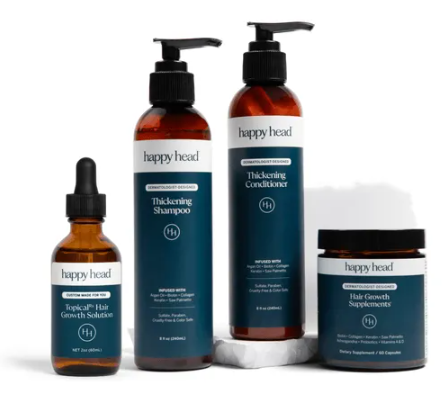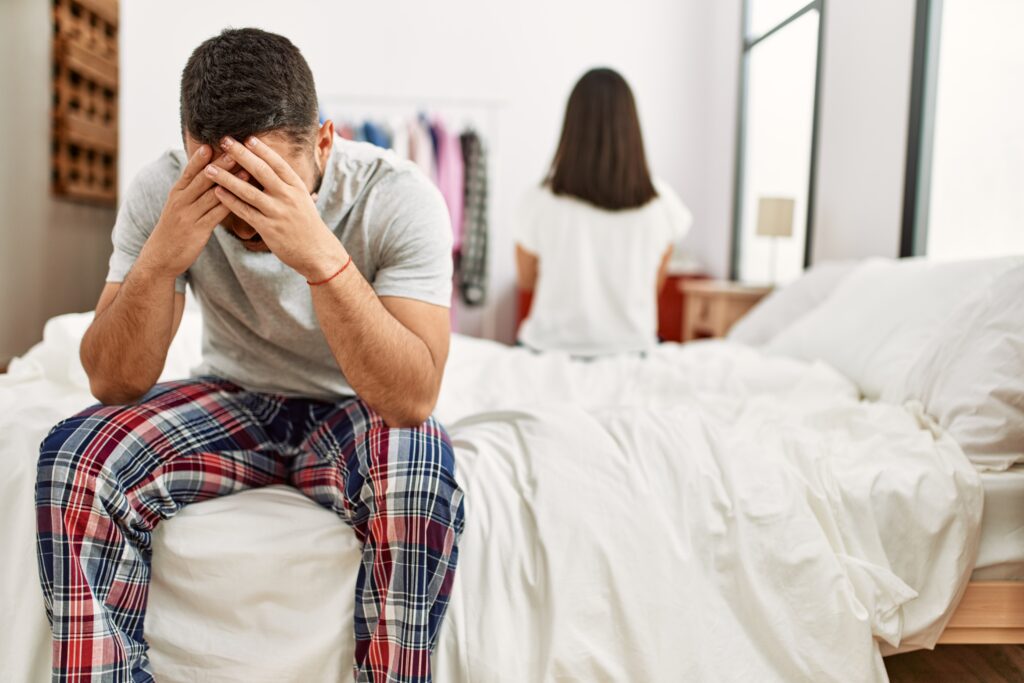Two of the most common treatments for hair loss are Minoxidil (sold under brand names like Loniten and Rogaine) and Finasteride (brands like Proscar and Propecia). They’re both powerful treatments, but they focus on different root causes. This means that choosing one over the other — or a combination of the two — comes down to your specific needs.
Let’s see how they compare.
How They Work
Minoxidil’s active ingredient is a vasodilator, which means it dilates blood vessels in order to increase blood flow. In fact, minoxidil was originally created as a blood pressure medication before researchers found that it had the unintended side effect of hair growth.

Today, it’s available in brands like Rogaine, usually in concentrations of 2% or 5%. When applied to the scalp, they increase blood flow and encourage the delivery of oxygen and key nutrients. This helps to promote growth and combats hair loss caused by things like alopecia areata, pattern baldness, stress, medication, and a poor scalp environment. However, it doesn’t address any potential hormonal causes of hair loss.
Finasteride, on the other hand, works by preventing testosterone from being converted into dihydrotestosterone (DHT). This is a good thing because if you have too much DHT, your hair follicles shrink, leading to thinning and hair loss. It’s usually prescribed as an oral medication, but you can also get a topical solution.
Finasteride is most effective when treating androgenetic alopecia (pattern baldness). However, it’s not as effective for stress-related hair loss or chemotherapy-induced hair loss.
Timeline for Results
Minoxidil provides noticeable results between three and six months of regular use. You won’t see its full benefits, however, until you’ve been using it for nine to 12 months.
Similarly, Finasteride starts to show noticeable improvements within three to six months of regular use. Its full benefits tend to take anywhere from six to 12 months.
Effectiveness

Both Minoxidil and Finasteride have been shown to be quite effective at treating hair loss. Depending on the cause, however, one might be more appropriate for your needs.
In a study of 40 subjects with male pattern baldness, for example, 80% of men saw demonstrable results with oral Finasteride — compared to 52% for those applying topical Minoxidil.
Because both products are effective and can be taken together, many people choose to pursue both treatments. In fact, in another study, the combination of topical Finasteride and Minoxidil resulted in more hair growth than topical Minoxidil alone.

That’s why companies like Happy Head offer solutions that combine both minoxidil and finasteride into one topical treatment. Happy Head also customizes its treatments to your DNA and the cause of your specific hair loss — promising highly effective, personalized solutions.
Who Should Avoid Minoxidil and Finasteride
Minoxidil should be avoided by anyone with a history of cardiovascular disease, and those with allergies to components like propylene glycol (which is used in the topical solution) should also reconsider use.
Women who are pregnant or breastfeeding should avoid both Minoxidil and Finasteride. It’s especially important to note that there is a serious risk of birth defects associated with Finasteride, which is why it’s primarily prescribed to men.
Side Effects

Topical Minoxidil can result in redness, itching, or irritation on your scalp. The oral form can impact changes in heart rate or fluid retention, and it can also result in unwanted facial hair growth. In the worst cases, you might experience unwanted body hair growth in general.
Finasteride has very rare side effects, including ejaculation disorders, erectile dysfunction, and decreased libido. However, many of these side effects are reversible as soon as you stop taking it.
Choosing the Right Treatment for You
Whether you choose Minoxidil vs. Finasteride for hair loss will usually come down to the exact root cause you’re trying to treat, which side effects you might want to avoid, and how quickly you want to see improvement.
Those wanting to try minoxidil can get something like Rogaine over the counter, whereas Finasteride will require a prescription from your doctor.
That said, combining the two treatments can yield significantly better results than taking one by itself. With companies like Happy Head, you can get DNA-based combination solutions that use both Minoxidil and Finasteride to restore your hair and boost your confidence.
- Locklab vs Happy Head - December 9, 2025
- Best Hair Salon Management Software for Managing and Tracking No-Shows - December 4, 2025
- Best Salon Booking Software with Built-In Marketing Tools - November 25, 2025

